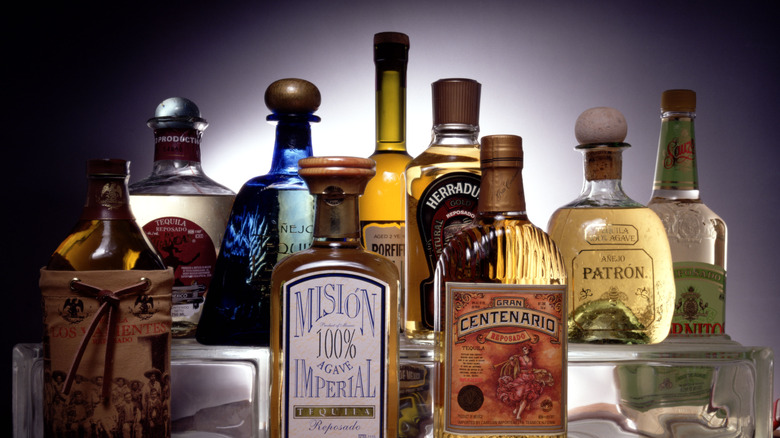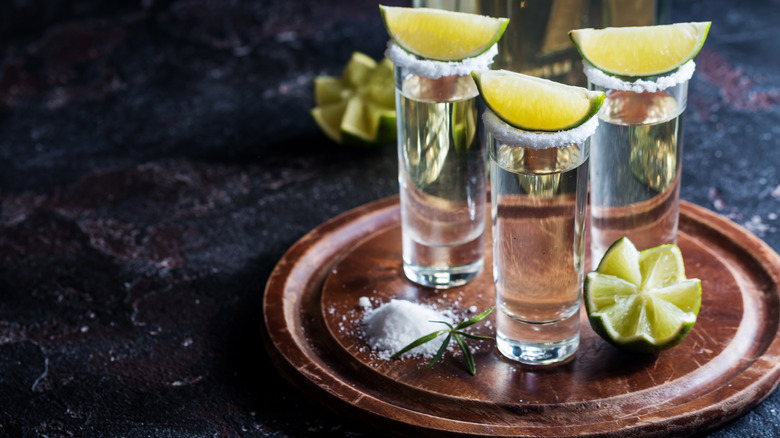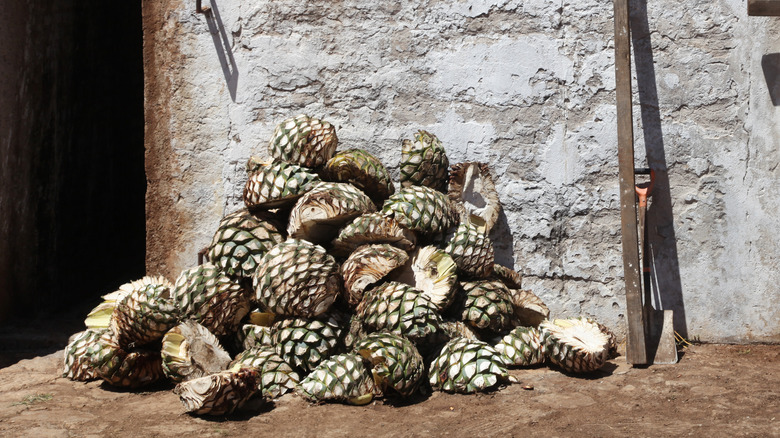What The Back Of Your Tequila Bottle Can Tell You About Its Quality
It's 2023, and the tequila market is saturated. For years, it has felt like a new celebrity tequila line has debuted every month, and there are plenty of non-affiliated tequila brands dropping too. For a drinker who wants to taste the best tequila of 2023, there are so many products to sift through that it can be overwhelming. You'll be happy to know there's a way to find out more about any tequila, just look for the NOM number on the back of every bottle. The Normas Oficiales Mexicanas, or NOM, identifies the certified distillery that makes each tequila, and among other information, confirms that it is actually a certified tequila, and that it's made from real agave.
The logic behind NOMs is similar to the truth about Kirkland's red label vodka: Where and how a spirit is made matters. Kirkland's red label vodka is made from the same waters as Grey Goose, which is a fact that helps informed consumers buy a quality product at a lower price. In NOMs, tequila lovers have a way to dive deep into a tequila's history and uncover specifics that can tell you about its quality.
The history of the NOM
For many years, there was no way to certify that tequila from Mexico was actually the product the label promised. Standards and certifications for tequila were not a thing until 1992, when the Mexican government updated an existing law to create transparency for consumers of manufactured goods, and standards to hold the manufacturers up to.
Mexico's Secretaría de Economía, or Economic Secretariat, manages NOMs and other standardization figures, and explains that NOMs establish "the rules, specifications, attributes, guidelines, characteristics or requirements applicable to a product...as well as the rules regarding terminology, symbology, packaging and marking or labeling, and their compliance or application."
Although there are many tequila brands — more than 1,400 brands are registered — there are actually very few approved tequila distilleries in Mexico, somewhere in the neighborhood of 140. Using the NOMs to communicate to consumers exactly what they are buying, the Mexican government was able to work with the Consejo Regulador del Tequila (CRT), the organization that's responsible for assigning the NOM. While some spirit makers have claimed that the standardization process hurts small-scale producers in favor of large corporate distilleries, the existence of NOMs is a huge boon for consumers.
How to interpret a NOM
The NOM, which can be found on the back label of a tequila bottle, is a four-digit code that you can look up on websites like Tequila Matchmaker. What you will find in the tequila directory are details about the drink like the distillery, agave type, water source, and aging container. Armed with this information, you can compare bottles of tequila on the basis of quality, and to discover what suits your palate best.
One thing to note is that while the NOM gives lots of information, it does not tell you if there are added flavors in a bottle. Tequila's little secret — that many bottles being produced all at the same distillery are only differentiated through additional flavorings — makes finding a unique tequila a little harder. But by using a NOM, you can see how many tequilas are made at the same distillery as the tequila you've looked up. The practice of using additives is much more common at larger distilleries, so if this is a concern for you, NOMs can help you identify a bottle from a small-batch distillery that is unlikely to use additives.


